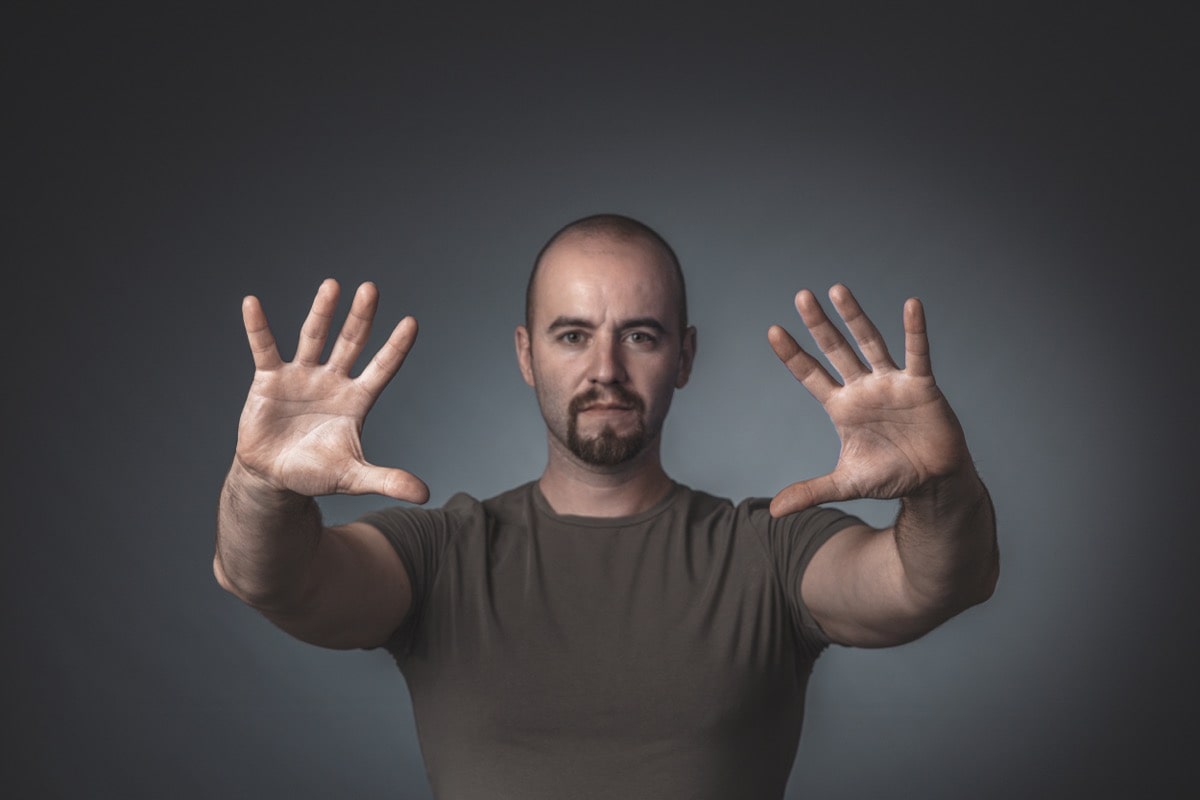Payments get easier every day. As we dive into the exciting world of payment innovations, we will focus our attention on the ever-evolving landscape of contactless payments. One bright example of innovative biometric payments is the Palm Payments system currently tested by WeChat in China.

Contactless payments have made a long evolutionary way from a heavy sack of coins through a wallet full of notes to plastic cards, and finally smartphones. Today, it seems that many payment systems are quickly omitting the payment accessory stage to transit directly to transactions that require no more than a human hand.
Paying for something or getting access to a facility by simply waving your hand is no longer a sci-fi image, but reality. Users of Weixin’s pioneering Palm Scan Payments can already try out this convenient solution at select Chinese subway stations, Seven-Eleven stores, gyms, and other locations.
What Are WeChat Palm Payments?
To be precise, the exact name of the payment innovation under discussion is Weixin’s Palm Scan Payments. At the same time, most people call it WeChat Palm Payments. Why is that?
Weixin and WeChat are both social media apps with payment functionality developed by the leading Chinese tech company Tencent. In fact, you may even say they are two different versions of the same application, sharing a similar user interface and functions. However, there is a very important difference between the two.
Weixin is a separate platform that exclusively caters to Mainland users. It uses a separate server and must comply with China’s stringent advertising and censorship laws.
WeChat is aimed at overseas users. All its features are focused on global digital trends and standards. Therefore, the app misses some of the advanced features and marketing tools official Weixin users can utilise.
Palm Scan Payments is one of the advanced features WeChat lacks. At the same time, the feature is still in its testing phase, so in time that also may change.
How Does It Work?
Palm patterns are unique to each individual, much like fingerprints. The ridges, lines, and other features on a person’s palm create distinct patterns that are unlikely to form in exactly the same way in any other person.
Palm Scan Payments system by Weixin involves a dedicated scanner with a camera able to distinguish unique patterns on customers’ palms. Infrared cameras analyse the individual palm prints and unique patterns of veins under the skin, allowing each user to be identified quite precisely. This authorisation type can be used for entry access or contactless payments.
The biometric scan is an opt-in option so users who don’t want their data to be collected can stick to more traditional payment methods. Those who do wish to try out the newest solution should hold their palm over the sensor on the palm scan device. They need to scan the screen’s QR code to register on their mobile phones as well.
Upon registration, users can start making payments by scanning their palms. The setup stage won’t be repeated by subsequent transactions. The process also involves additional 2 factor authentication to confirm the transaction. When instant payment takes place, the payer receives an instant notification of the deducted amount on their mobile phones.
The technology is not new. Amazon, for instance, has been implementing the palm-scanning technology for payments since 2020. Its biometric payment solution, Amazon One, launched at Starbucks, Whole Foods, Panera Bread, and other select locations. Nevertheless, the feature is far from mainstream.
Meanwhile, making palm scan payments mainstream is exactly what Tencent has in mind. It has every chance to do that. WeChat currently has over 1.33 billion monthly active users and is estimated to grow to 1.427 billion monthly active users in 2024.
Who Can Use WeChat Palm Payments and Where Can They Do That?
At present, Weixin’s new payment service is available for Mainland China citizens in select locations.
In May 2023, Weixin’s Palm Scan Payments system was introduced to passengers travelling on Beijing’s airport express train line. The same month, students at Shenzhen University also received an opportunity to make payments via the palm-recognition service.
In September 2023, the palm payment service was officially launched at over 1,500 7-Eleven convenience stores in Guangdong province. Simultaneously, Palm Scan Payments rolled out across unattended power bank rental stations in select areas of Shenzhen in southern China. Among such locations, there are Jiedian’s stations within the Shenzhen Coastal City, a shopping complex in Guangdong Shenzhen.
Supermonkey, a trendy Chinese gym chain, had about 2,000 of its users sign up to use the new palm scanning solution to access workout facilities.
The service can potentially expand to more locations and get more use cases providing there’s enough public demand. Moreover, its further implementation will depend on the feedback received from businesses and customers during the testing phase.
Benefits and Drawbacks of Weixin’s Palm Payments
As a type of payment processing enabled by biometric authentication, Weixin’s new solution has a few advantages.
- Palm prints are unique and can’t be copied, unlike passwords or PIN codes, so they provide enhanced security and protection against payment fraud.
- One doesn’t need to carry around additional passcards, passkeys, bank cards, or payment devices.
- The payment is initiated much faster than is the case with other contactless payment methods which use certain devices or accessories.
- People do not need be tech-savvy to use palm scan payments. Even if they require assistance during setup, all further transactions will be seamless, thus, accessible to customers of different ages and backgrounds.
- Palm scan payments are easier to use for people with disabilities who may have difficulty using traditional payment and authentication methods like physical cards or PINs.
- Such payment solutions require no plastic or paper means, which is better for the environment.
- In situations where hygiene is a concern, such as during a pandemic, touchless payment methods like palm scans can help reduce the risk of spreading germs.
Security and Privacy Concerns
At the same time, this payment method is not a perfect solution. One of the main concerns about palm scan payments is privacy. Having one’s biometric data stored in an official database which is used, for example, to check citizens’ movements across the country’s borders is one thing. However, providing any entity with detailed information about all your purchases, subway travels, and even gym visits may seem too much of a “Big Brother is watching you” vibe.
Perhaps, that is one of the reasons why Tencent started rolling out its service in Mainland China which is, frankly, quite intrusive into its citizens’ lives, anyway.
Even in a surveillance state such as China, there are additional concerns about such extensive datasets getting to the wrong hands. Such sensitive information could attract cybercriminals, be sold on the black market and cause a person enormous problems. If biometric data is compromised or hacked, it could lead to identity theft or other security risks.
Thus, Tencent claims it handles the sensitive data with utmost vigilance. According to the firm, customers’ biometric data is stored on the cloud and additionally encrypted for security.
Potential Implementation Obstacles
Biometric data is subject to various regulations and privacy laws, which can vary by jurisdiction. Businesses and organisations that collect and store biometric data for payment purposes must comply with these regulations, adding complexity and potential legal liabilities for Tencent if it decides to roll out the feature internationally.
Implementing biometric payment systems also requires compatible hardware and software infrastructure. This can be costly for businesses and may present integration challenges. Therefore, the introduction of biometric palm scan payment systems is currently very limited in scope and quite monopolised.
Despite all the perceived convenience, biometric scanning systems may not always be accurate or reliable. If you continuously use a fingerprint scan on your smartphone or at working facilities, you know how hard it may get if your hands are too wet, too dry or have a paper cut, for example. It is not impossible that some similar reasons may prevent infrared cameras from identifying palm patterns correctly as well.
Factors such as variations in lighting conditions, changes to the user’s physical characteristics (e.g. injuries or ageing), or even technical issues with the scanning equipment can affect the accuracy of biometric authentication.
On a Final Note
WeChat palm payment solution – Weixin’s Palm Scan Payments – is an innovative biometric authentication method that supplements existing Weixin payment offerings. It is currently being tested in select locations, e.g. grocery stores, student campuses, and gyms, in Mainland China. Though the technology itself is not new, Tencent aims to bring it to new heights and make it mainstream. The system has a few perceived benefits, including speed and convenience of use, but is also treated with caution due to privacy and regulatory concerns.









